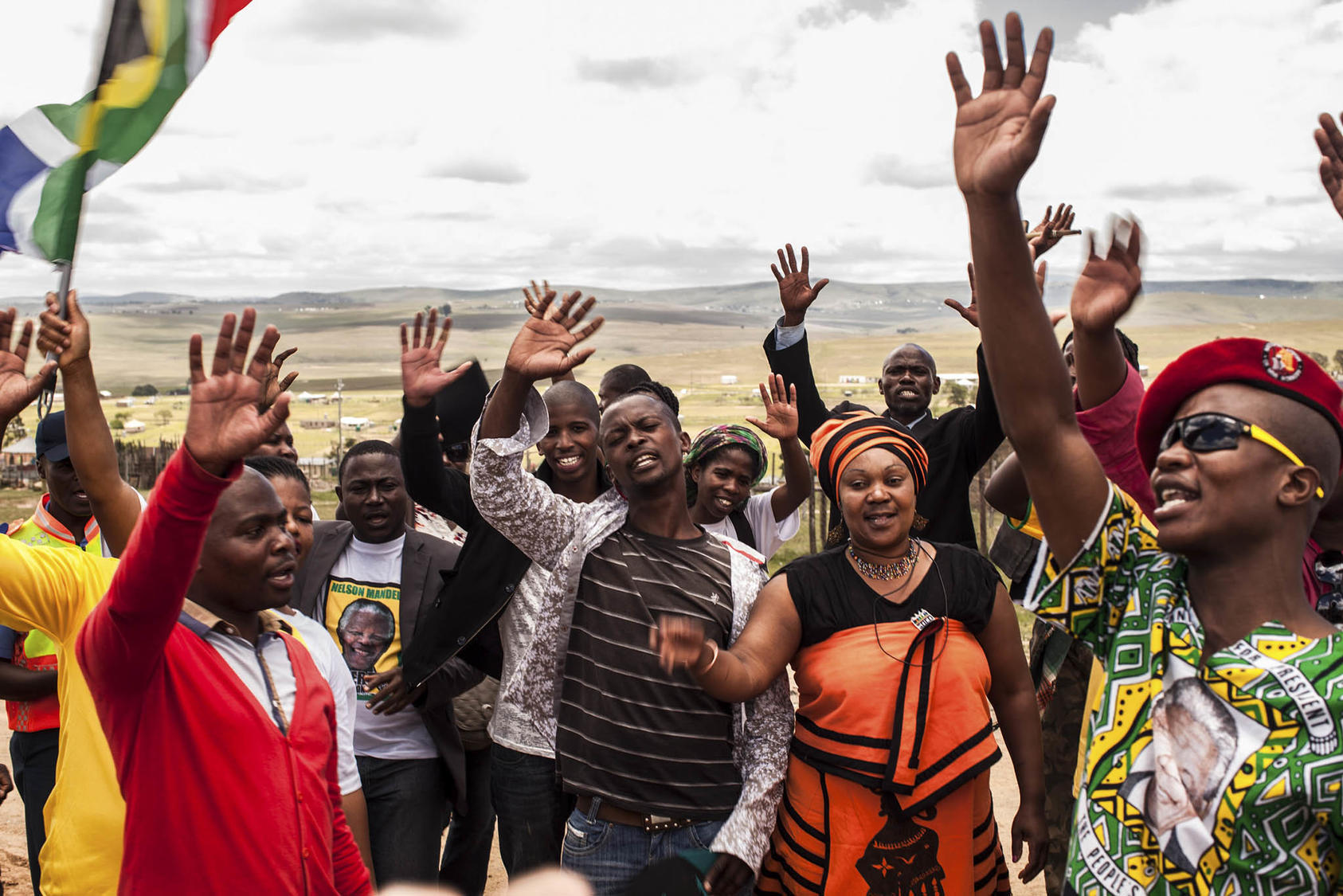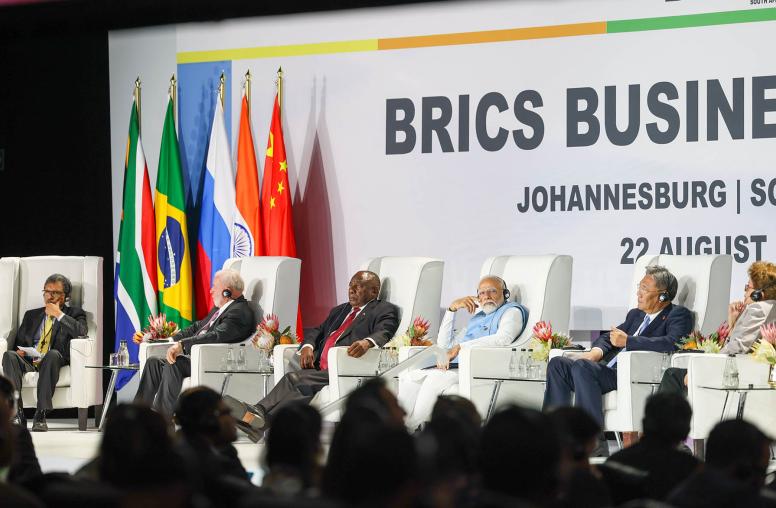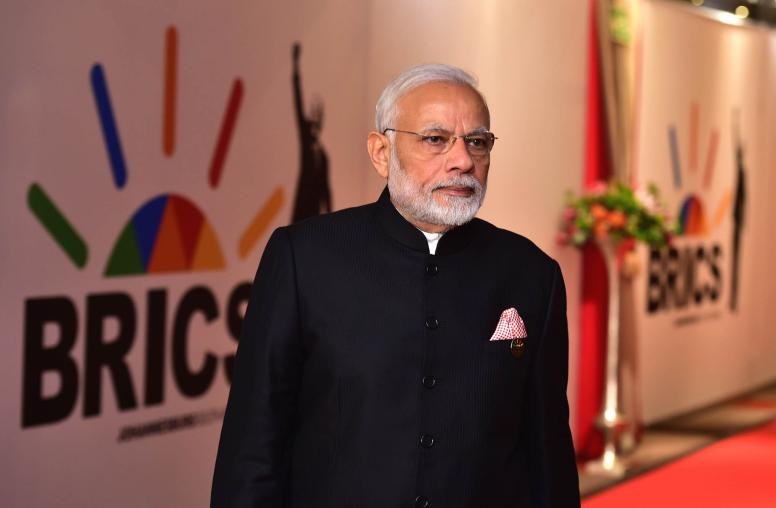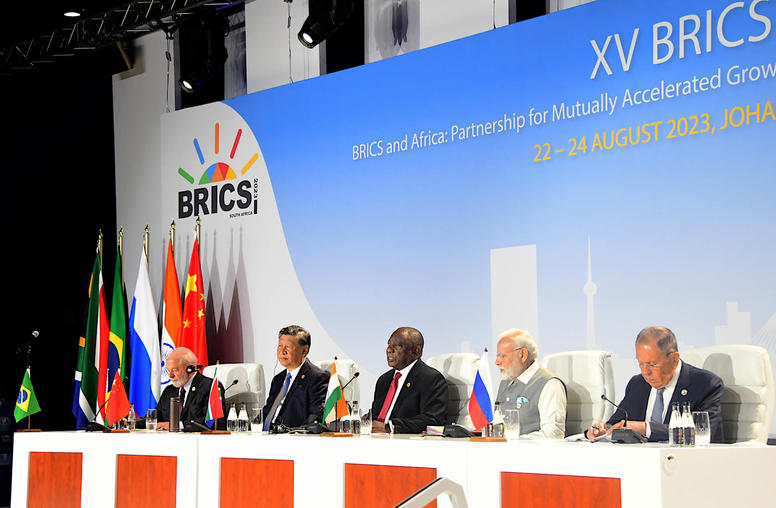How Nelson Mandela’s Legacy Still Resonates for Youth Movements
Mandela’s commitment to justice with reconciliation inspires activists a generation later.
As December marks 10 years since the passing of Nelson Mandela, an icon of 20th-century struggles for justice and peace, a new generation of activists is building from his legacy to counter our 21st-entury crises of rising global violence. Among the signs of Mandela’s vital relevance for us now is a global, online conference to bolster nonviolent social action in pursuit of justice and peace that opens December 7, hosted by the Stanford University-based World House Project with partner groups from South Africa, India, Mexico and elsewhere.

That gathering (called the Turning Point Summit) follows a Gandhi King Mandela conference in South Africa last summer that convened youth activists, community leaders and others to advance new ways to apply the legacies of Nelson Mandela, Mohandas Gandhi and Martin Luther King, Jr. — notably their use of nonviolent resistance against injustices of colonization, apartheid and other forms of racialized violence and oppression. These conferences, like the work of USIP and its partners, including youth leaders from countries facing violent conflict worldwide, are applying those legacies to current and emerging problems of injustice and violent conflict.
Why such attention to the legacies of Mandela and other movement leaders from generations past? Organizations and communities worldwide, working to raise awareness and take action around key issues in pursuit of peace and justice are using nonviolent action — in the form of strikes, protests, sit-ins, marches and other tactics — because it is an effective tool. Recent nonviolent movements have mobilized populations and created organizations to improve governance, counter gender-based violence and discrimination and advance social and economic justice.
So on the 10th anniversary of Mandela’s death, just 13 days from now on December 5, it’s worth stepping back for a few minutes to note his legacy — and in particular, perhaps, Mandela’s remarkable development of methods and strategies. Over decades, working largely from prison, Mandela developed his ideas for an effective movement. From his 1960s role as a trained guerrilla leader of the South African Black majority’s main resistance organization, the African National Congress, Mandela navigated a changing conflict to shape his fight against injustice into a struggle for reconciliation and human transformation of South Africans, both oppressors and oppressed.
Mandela’s Journey
Born the son of an ethnic Xhosa chief, Nelson Mandela became a lawyer and in his mid-twenties founded the African National Congress (ANC) youth wing. But under South Africa’s apartheid rule, seeking justice through unjust laws was impossible. Mandela would thus help form the ANC’s armed wing and train as a guerrilla saboteur in Ethiopia. After the ANC launched a campaign of sabotage, designed to avoid civilian casualties, against the electrical grid and other economic and military targets, the government arrested him and other ANC activists. He would spend decades in prison, emerging to lead a national reconciliation effort, be elected president, and be awarded the Nobel Peace Prize.
As South Africa’s first Black president, Mandela is known for his dedicated efforts at dismantling decades of white supremacist apartheid rule and helping put his country on a path toward healing, justice, and reconciliation.
Much of Mandela’s legacy centers around his later years, a result of South Africa’s apartheid regime keeping him behind prison walls for nearly three decades. Yet that confinement proved insufficient to stifle Mandela’s influence on the struggle for Black liberation, which only grew. He attracted worldwide attention while continuing to speak out and shape the movement against apartheid.
Understanding Mandela and his lifelong contributions to the Black freedom struggle means seeing not only the achievements of the elder statesmen but also his role as a leader of the ANC and his decision to help form the ANC’s armed wing, uMkhonto we Sizwe (MK), which means “spear of the nation” in Xhosa, in 1961. These groups, along with trade unions, other civil society organizations, youths and other ordinary people were all vital to the anti-apartheid movement and contributed in diverse ways.
The ANC had built on a foundation of nonviolent tactics and organizing laid by Mahatma Gandhi during the years when the Indian independence leader lived in South Africa, where he first developed his form of civil resistance, called satyagraha. The ANC and allied organizations had for years adhered to constitutional means and engaged in protests, strikes, boycotts, and other forms of nonviolent pressure to challenge apartheid and its racist policies against non-whites.
In 1962, South African authorities arrested Mandela among hundreds of others following a state of emergency imposed after police killed dozens of people who had been part of peaceful protests. They had been protesting “pass laws,” which sought to control the movement of Africans in South Africa. The ANC and other organizations that opposed apartheid were also banned outright.
The South African regime, with the support of the United States and other European countries, was intent on violently repressing any attempt to undo the status quo and improve the lives of Black residents, who were restricted from moving freely in their own country, relegated to certain areas to live, and not allowed to vote or participate in elections.
On trial in April 1964, Mandela described how the violently oppressive nature of white apartheid rule left the ANC in its fight to defend the rights of African people no choice but to consider selective methods of violent resistance. The choice was not made “in a spirit of recklessness, nor because I have any love for violence,” according to Mandela. But rather it had been planned “as a result of a calm and sober assessment of the political situation that had arisen after many years of tyranny, exploitation and oppression of my people by the whites."
Mandela concluded the speech by saying: “I have cherished the ideal of a democratic and free society in which all persons live together in harmony and with equal opportunities. It is an ideal which I hope to live for and to achieve. But if needs be, it is an ideal for which I am prepared to die.”
The court convicted Mandela and sentenced him to life imprisonment. During his decades of hard labor in the Robben Island prison, the ANC advanced both nonviolent resistance and MK’s guerrilla activity as it faced the apartheid regime and right-wing groups that acted in cooperation with the government to terrorize Black South Africans. Many leaders of the ANC and other resistance groups were forced into exile to avoid being killed or imprisoned.
The 1976 Soweto uprising marked another turning point in the movement. Police had massacred hundreds of Black children gathered for peaceful protest against the government’s imposition of the Afrikaans language, which was closely associated with apartheid and its message of white supremacy, in schools. Black resistance and international support against apartheid grew.
In following years, the apartheid regime’s hold on power was further weakened amid growing threats to its economic and political stability. President P.W. Botha offered Mandela a deal in 1985 — he could be freed from prison if he renounced violence as a method of resistance. Mandela, imprisoned at that point for over 20 years, refused the conditional release, and called on Botha to end apartheid, free political prisoners and allow Blacks the right to engage in political activity.
The combination of growing resistance, upticks in violence and a weakened apartheid system set the stage for secret talks between apartheid officials and Mandela. The resistance had made great strides in leveling the balance of power between opposing forces. Perhaps Mandela’s willingness to negotiate had been informed by this understanding. His decision also demonstrated his ability to put aside feelings of enmity and envision new possibilities for a post-apartheid future.
Formal negotiations started in 1990. Then-President F.W. de Klerk unbanned the ANC and announced Mandela’s release from prison — a tremendous achievement for Black South Africans in their fight for liberation. Still, political violence would continue a few years — mainly in attempts by the government and pro-apartheid forces to sabotage the negotiations — before the negotiating parties reached an agreement. South Africa would pass a new interim constitution and hold its first elections in which all citizens could vote in 1994.
The ANC’s victory in the election and Mandela’s subsequent elevation from former prisoner to president of the South African republic laid the ground for societal transformation. It marked a new beginning for a nation wracked by violent systems of oppression and exclusion. As president, Mandela worked to facilitate social cohesion among all the peoples of South Africa through processes of healing, including by establishing a Truth and Reconciliation Commission as a form of restorative justice. His moves were a surprise to many who had assumed that someone who had gone through what Mandela did would use his power to enact revenge or display signs of bitterness, rather than the forgiveness that he embodied.
Mandela has inspired many with his journey from freedom fighter to peacebuilder. While South Africa, the world’s most unequal country, is still plagued by injustices, the legacy of Mandela and the anti-apartheid struggle offer poignant lessons for how we can resist oppression and help build societies that are more peaceful and just.



